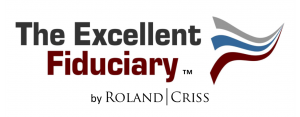Last week’s legal bombshell will scramble human resources strategies for every college and university that sponsors a qualified retirement plan. A second lawsuit against Duke University in connection with a complaint filed in August 2016 alleging its breach of fiduciary duty, will have many CFOs and compliance managers taking a fresh look at their situation.

The human resources deck has been reshuffled – and risk management strategies for all colleges and universities along with it. The results will ripple through the higher education community, particularly among institutions that mirror the Duke University retirement plan model.
Let’s examine the Duke University retirement plan complex.
First, Duke’s human resources managers employ multiple vendors (TIAA, Fidelity, and VALIC ) to provide recordkeeping services and investments for its 403(b) plan. Those three vendors entered into cash payment arrangements with the plan (called revenue sharing) from which Duke paid itself in order to fund its human resources department. A follow-up lawsuit filed last week against Duke (the first lawsuit was filed in August 2016) and its human resources executives alleges that Duke received an estimated $1.5 million over a two year period beginning in 2012 that belongs to the participants in the plan.
Revenue sharing arrangements like those revealed in the Duke case are common and widespread throughout the higher education community, according to many legal observers. Scores of institutions that sponsor 403(b) plans adhere to such a revenue sharing design strategy in order to augment their human resources budgets.
Individuals who serve as responsible plan fiduciaries for 403(b) plans might be wondering: what’s wrong with revenue sharing; how can vendors sell such an arrangement if it’s as risky as it appears; and how do we insulate our institution and its executives from the liability that is inherent in a revenue sharing strategy? (Get the answers to these and other questions.)
The fallout from the lawsuits is complicated because the 403(b) plan model in question has been replicated by recordkeeping vendors across the college and university community. Pension law makes plan sponsors, not vendors, accountable for constructing and managing retirement plan features and the costs that participants pay for those services. That’s an insidious part of the risks that are just now surfacing. Lulled into a belief that vendors, especially those with big national brand names, are “taking care of it” has many institutions cornered.
What’s likely to happen? Expect more colleges and universities to be roiled by turmoil as activist plan participants team up with savvy plaintiff lawyers. The Duke University cases, combined with similar lawsuits filed against dozens of other institutions, have provided the plaintiff bar with a thorough education about the flaws that exist in multi-vendor 403(b) plan models.
Some C-level executives in finance and human resources will adjust their risk management thinking and seek professional help. Others will attempt to solve the challenge by conducting reviews of new vendors in Request For Proposal (“RFP”) projects. Without a framework for properly managing the fundamental risks, however, an RFP won’t likely produce any improvement.





